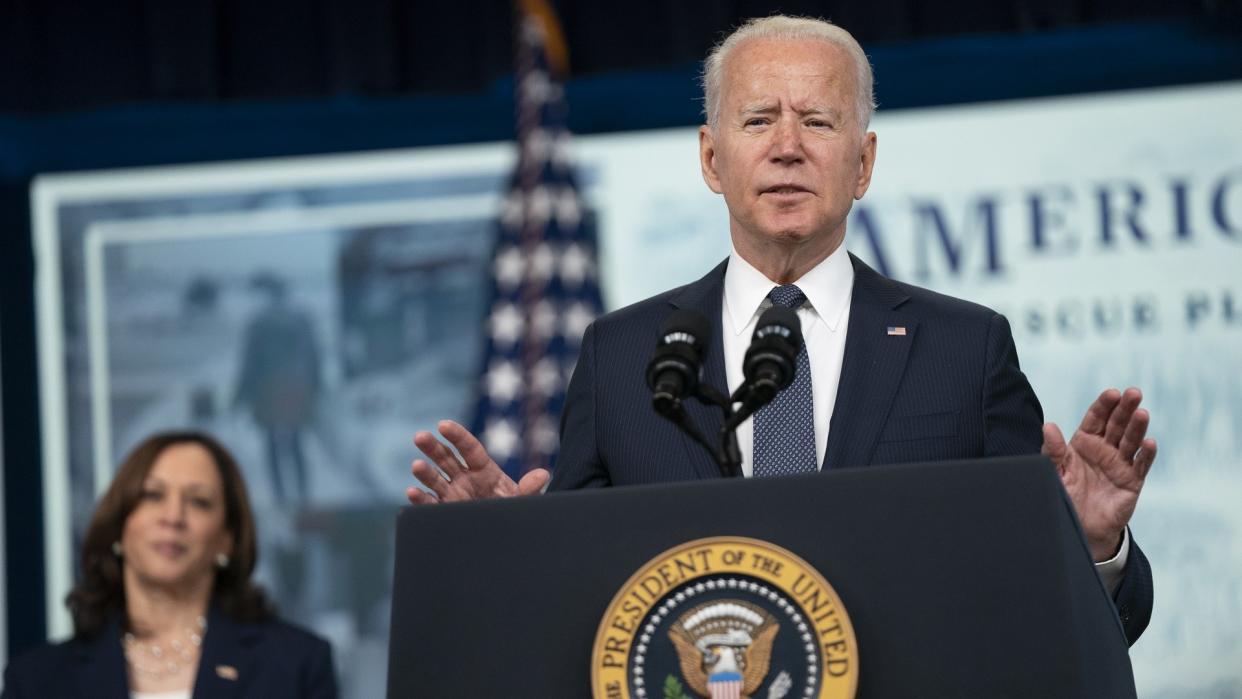Biden’s Stimulus Stoking the Flames of Inflation — Are Long-Term Effects Possible?

A new research paper from the San Francisco Federal Reserve explored the effects of President Joe Biden’s $1.9 trillion American Rescue Plan stimulus package on the economy. Although the stimulus has certainly stoked the flames of inflation, with prices rising on consumer goods, food, gas, and housing, the report noted that inflation isn’t likely to overheat the economy.
See: Stimulus Money Could Cause the Stock Market to Plunge 15% by November
Find: Fourth Stimulus Won’t Happen, But These Federal Programs Aid Those In Financial Need
“The later timing and large size of the ARP [stimulus] stirred debate about whether it is causing an overheating of the economy and fueling a sustained increased in inflation,” the researchers wrote.
In September, prices reached a 13-year high, with consumer price inflation rising 0.4%. This was faster than August, but slower than prior months, CNN Business reported.
The paper from the SF Fed found that the stimulus could increase the Fed’s favored inflation gauge by 0.3% this year and 0.2% next year. The researchers called its impact for 2023 “negligible.”
Related: Why Does The Government Want to Know How Much is in Your Bank Account?
“The estimated impact of the ARP on inflation is meaningful, but it is still a far cry from the strong overheating of the 1960s,” the report said. The New York Times noted that the Fed typically aims for 2% inflation on average over time, and that a few tens of a percent over that does not constitute “overheating” in most cases.
The American Rescue Plan also tightened the labor market, which contributed to the increasing inflation. Economists compared the vacancy-to-unemployment ratio, noting that it is at an all-time high today, approaching previous highs seen in the 1960s.
In the 1960s, there were 1.5 job vacancies per unemployed person. Today, that ratio sits at 1.25, more than twice the historical average of 0.6%, CNN reported. Employers are forced to raise wages to attract workers which, in turn, drives prices higher.
Learn: 4 Ways Biden’s ‘Build Back Better’ Agenda Could Impact Small Businesses
Stimulus Errors: Was Your Child Tax Credit Check Smaller Than Usual? Here’s What’s Going On
The good news, according to the SF Fed report, is that the tight labor market and inflation rates should begin to fall by next year. “We assume that expectations for longer-run inflation remain strongly anchored, as they have been over the past 20 years,” the economists wrote.
More From GOBankingRates
Last updated: October 20, 2021
This article originally appeared on GOBankingRates.com: Biden’s Stimulus Stoking the Flames of Inflation — Are Long-Term Effects Possible?

